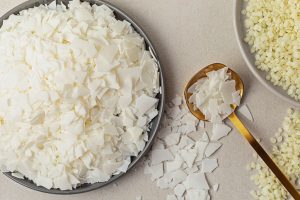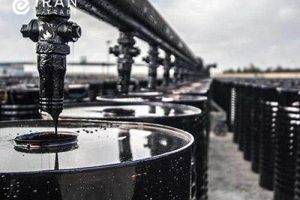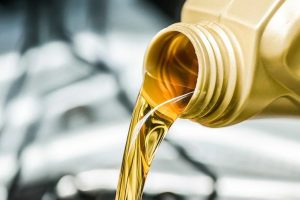Emulsion Bitumen: What is Bitumen Emulsion + advantages!
Have you noticed the quality of the roads when you travel by car? For instance, some streets have high quality, and viehcles pass lightly. However, some are not paved with high-quality asphalt, and usually have bumps. Since bitumen is one of the main components of asphalt, it is a significant factor to determine its quality. Also, there are many uses for bitumen aside from asphalt. Therefore, you should be able to recognize different types of bitumen to make better use of it. But do you know what bitumen emulsion meaning is and what it is composed of?
What is bitumen emulsion?
Bitumen emulsion is a type of bitumen that has a lower viscosity than other bitumen. To produce this type of bitumen, manufacturers mix bitumen with water and emulsifier.
(For more information about types of bitumen, click here.)
That is why, because of it composition, bitumen emulsion’s viscosity is lower than many other types of bitumen. Furthermore, using bitumen emulsion has its advantages. For instance, storing and transferring is easier in lower temperatures which saves energy and makes it eco-friendly.
(For more information on Bitumen Viscosity, click here.)

How do you make bitumen emulsion?
Even though bitumen emulsion formula is different than other types of bitumen, the process of manufacturing is relatively simple and is carried out in three stages:
(For more information about introducing Iranian bitumen refineries, click here.)

Mixing water and emulsifier
First, the manufacturers mix water with a certain type of emulsifier and other chemical agents. Depending on the ionic nature of the chemical agents, the type of emulsifier used in the process will be different.
For more information about Best Bitumen Solvent, click here.

Compounding water and emulsifier with bitumen
After the mixture of water and emulsifier is ready, the manufacturers pour the mixture into a device called “Colloid Mill”. Then, they add bitumen to the mixture. The ratio for the bitumen is different based on the usage of bitumen emulsion. For example, the ratio will be 60 to 70 percent if the uses are important. But overall, the ratio is 40 to 70 percent on average.

Milling the mixture
At this stage, the manufacturers use the colloid mill in the bitumen emulsion plant to dissolve the bitumen into smaller particles. The colloid mill dissolves bitumen into tiny drops as small as two microns. However, these drops will attempt to reunite after the dissolution. But the emulsifier in the mixture will create a surface charge around bitumen drops and the function of this surface charge is two-fold.
On one hand, it prevents bitumen drops from reuniting. On the other hand, it suspends bitumen drops in the mixture. After the milling process is finished, the manufacturers store the bitumen in storage tanks for preservation.

What is bitumen emulsion made of?
As we explained in the previous paragraphs, bitumen emulsion is made of water, emulsifier and bitumen. However, different products of this bitumen use various ratios of these three components.
The overall ratio of bitumen in emulsion products can be between 40 to 70 percent. Therefore, the ratio of water is usually between 30 to 45 percent. But for the emulsifier, this ratio is fixed and cannot be more than 0.5% For the whole mixture.

Temperature of bitumen emulsion
When manufacturers add bitumen to the mixture of water and emulsifier, the molten bitumen’s temperature is between 135 to 150 centigrades. But in the next stages of production, this temperature will lower to a point that by the end of the production process, it is no more than 95 centigrades.

Bitumen emulsion standard
Bitumen emulsion products are tested and categorized based on different standards. These standards are mainly determined by two central American institutions. One is the American Association of State Highway and Transportation Officials (AASHTO). The other is The American Society for Testing and Materials (ASTM).
Of course, each country has its own standards and regulations for producing bitumen. However many of them set these standards according to the parameters of these two institutions. However, do you know which factors are important for categorizing emulsion products based on these standards?

Important factors in grading bitumen emulsion
In the previous paragraph, we explained that institutions such as AASHTO and ASTM categorize and grade emulsion products based on their standards. As a result, buyers can purchase bitumen products according to their uses and grading. This bitumen emulsion specification is done based on some important factors which are:

Bitumen viscosity
One of the first and most important factors that experts use for grading bitumen emulsion is viscosity. Therefore, they conduct the viscosity test by calculating the amount of bitumen in the mixture.
If the bitumen is used in dense graded aggregates, then its viscosity has to be lower. However, if it is used in more open-graded aggregates, its viscosity has to be higher. Accordingly, the bitumen emulsion which has small droplets with narrow distribution has higher viscosity.

Bitumen ductility
When experts want to test how much bitumen emulsion can resist before breaking, they perform a ductility test on it. In a ductility test, the bitumen stretches until it breaks. Its breaking point will determine its ductility.
If the emulsion’s ductility is more than 40 centimetres, it is suitable for application on heavy-traffic roads. But if the it’s ductility is low, then it is not good for heavy traffic roads in winter, because it is more likely to break.

Bitumen penetration
Every bitumen product has a degree of penetration, which makes it hard or soft. To determine this degree, experts perform penetration testing on the bitumen. They use a standard needle to penetrate the bitumen emulsion.
Different emulsion products have various penetration degrees that specify their use. For example, the harder bitumen emulsion is to penetrate, the better it is to apply on roads in hot environments.

Bitumen stability for storage
This factor, which is also known as bitumen sedimentation, is determined after bitumen emulsion is produced and stored in storage tanks. Bitumen storage stability assesses bitumen’s stability when it is stored. In this test, experts determine if bitumen droplets settle in storage tanks after production. When experts perform this test, they keep it in a cylinder at room temperature.
After 24 hours, they extract two samples from the top and bottom of the cylinder. Then, they compare the weight of the two samples and assess the difference, which shouldn’t be more than one unit.
Two factors that affect bitumen storage stability are viscosity level and droplet size. For instance, if a bitumen emulsion’s droplets are smaller, they are less likely to settle at the bottom of the storage tank.

Bitumen particle charge
Remember when we said that during bitumen emulsion production, the emulsifier creates a surface charge on bitumen droplets and prevents them from reforming? This surface charge can also change the nature of bitumen droplets to anionic and cationic. Therefore, this is another factor for grading bitumen emulsion. Experts use particle charge testing to determine the nature of bitumen emulsion droplets.
(For more information about anionic emulsion bitumen, click here.)
In this test, they put two positive and negative electrodes inside the bitumen emulsion. Then, they apply a direct electrical charge to the bitumen. After 30 minutes, they examine the electrodes. The droplets which sedimented on the positive electrode are ionic. However, the droplets which sedimented on the negative electrode are cationic. As a result, experts can determine the nature of asphalt emulsion based on the particle charge of its droplets.

What is bitumen emulsion used for?
In the past and mostly in the 20th century, people often used emulsion sprayer for pesticides. However, today bitumen emulsion has more extensive uses in road construction, maintenance and even roofing. It’s uses in road construction are very important and below is a list of its most common uses:

Applying Tack Coats
A tack coat is a layer that road workers apply between two layers of asphalt. They usually use CRS-1 and CRS-2 bitumen which are two emulsion products. Using this bitumen can improve the quality of asphalt significantly and decrease its fatigue life. In addition to its cost-effectiveness, bitumen emulsion is also used in building a running tack coat, but the temperature for applying it is mostly 10 to 15 Celsius.

Applying cheap seals
Building new roads requires a lot of time and money. Therefore, it is easier to renovate old roads. That is why road workers use cheap seals because it is less expensive and protects asphalt from oxidation and ageing. In this method, bitumen emulsion paint is the more popular choice to rebuild light traffic and rural roads.

Using slurry seals
Sometimes, road workers use a method like slurry seals to make road asphalt more cohesive. When they want to apply slurry seals, they mix bitumen emulsion with aggregates and mineral filler. Then, they spray this mixture on asphalt to make it more resistant to weather.
They also use this method in road maintenance and for reducing the damages to the surface of roads that are the result of bitumen oxidation. Unfortunately, this method is only suitable for road maintenance and it can’t increase the strength of the roads’ structure.

Microsurfacing method
Microsurfacing is another version of slurry seals which uses bitumen emulsion modified by polymer. For applying this method, road workers also use dense graded aggregates with polymer bitumen emulsion to make it stronger than the slurry seal mixtures.

Benefits of using bitumen emulsion
Bitumen emulsion has a certain type of composition and has its advantages and uses. Therefore, some prefer its use over other bitumen types. For instance, because water is one of its main components, road workers can use asphalt emulsion in most weather conditions, even rainy ones. Furthermore, it doesn’t need to be applied at high temperatures, which makes its’ appliance much easier than other types of bitumen.

Bitumen emulsion adhesion and different uses
Bitumen emulsion has anti-stripping qualities that make its adhesion to asphalt stronger. That is why it is a popular choice for applying on asphalt. However, the use of bitumen emulsion is not only limited to asphalt but also helps to stabilize the desert soil. Moreover, using asphalt emulsion produces much less waste compared to using other types of bitumen.

Disadvantages of using bitumen emulsion
Even though bitumen emulsion has many uses, it is not without its disadvantages. Perhaps the most obvious is that you cannot use every type of this bitumen for every usage. The reason for that is that emulsion products have special functions based on their categorization. Also, their setting time depends on the temperature and their grading. That is why you cannot use every type of asphalt emulsion for every appliance.

The components determine the quality of bitumen emulsion
As we said before, the main components of bitumen emulsion are water, bitumen and emulsifier. However, some manufacturers may use soap or gasoline solvent instead of water. If the solvent is water or soap, then the quality of bitumen is good and it will evaporate when settled on asphalt. It also has a strong adhesion to it.
But if the solvent used is gasoline, then it will release toxic substances like sulfur when it evaporates. The presence of these substances on asphalt can increase the risk of cancer for those who are near it. Additionally, the more time bitumen emulsion remains in the storage tank and is exposed to extreme temperatures, the more likely it is to break.

Different types of bitumen emulsion
Bitumen emulsion suppliers categorize and grade bitumen based on different factors. One of the most important factors is the particle charge. For example, if the particle charge of bitumen is ionic, then the product’s name begins with the letter A. However, if the particle charge of bitumen is cationic, it begins with the letter C.
Another important factor is the setting time of bitumen emulsion on asphalt. The setting time is the duration in which the bitumen evaporates and is glued on asphalt. This factor determines if the bitumen is rapid, slow or medium setting.

Rapid-setting bitumen emulsion
As the name implies, this type of bitumen will evaporate and glue to asphalt as soon as it settles on it. CRS, which is the cationic bitumen emulsion and CRS-1 are among rapid setting bitumen. Road workers mostly use this type of bitumen for building the surface of roads and cheap seals.

Medium-setting bitumen emulsion
Medium-setting bitumen emulsion is produced by premixing bitumen emulsion and coarse open-graded aggregates. Therefore, its setting time is slower than rapid-setting bitumen.
CMS bitumen emulsion belongs to the category of mediums setting bitumen products.

Slow-setting bitumen emulsion
Slow-setting bitumen emulsion is the most stable bitumen emulsion. That is why road workers can use it with dense graded aggregates, slurry seals and recycled asphalt.
CSS bitumen emulsion is a slow-setting bitumen.

Bitumen emulsion price
There are a few factors that affect the pricing of bitumen emulsion. First, you have to see if the bitumen is ionic or cationic. The price of cationic bitumen emulsion is a bit higher than the ionic one. Aside from that, other factors such as the price of petroleum, emulsifiers and the production process of asphalt emulsion all affect its pricing.
(Click to find out about the bitumen price.)

Where to buy bitumen emulsion
The quality of bitumen is important in road building and it is also useful in roofing. Therefore, the more you know about different types of bitumen, their pros and cons and uses, the better you can choose bitumen products. If you are interested in purchasing bitumen emulsion, you can buy from Iran ETrade Inc. We are a company that specializes in producing petroleum products and would be delighted to provide you with our best bitumen.

- What Is LPG: Properties + Uses Liquefied Petroleum Gas
- What Is Petroleum Paraffin: Types + Properties And Applications
- What is Petroleum Coke: Types + Applications
- What Is Mazut: Advantages, Applications + Hazards
- What Is Diesel fuel: Types Gas oil + Applications
- What is gasoline? Types + Uses and Production Process









